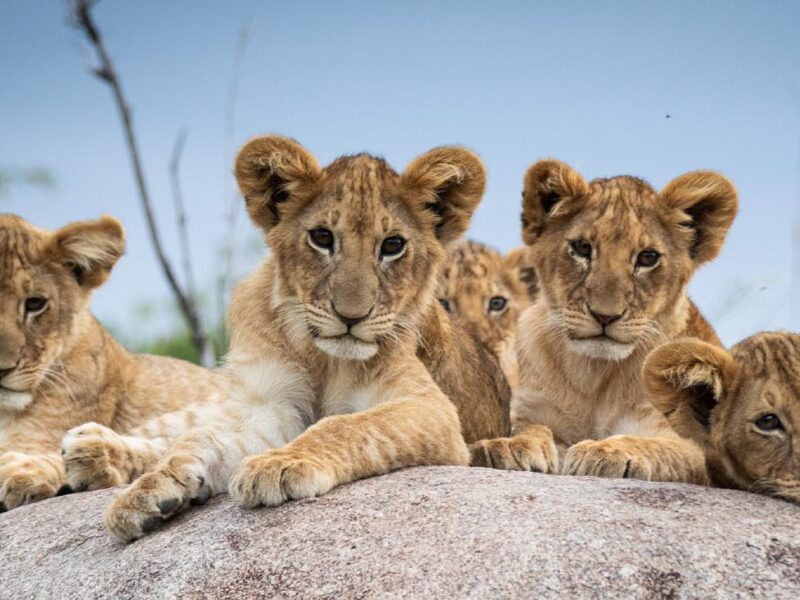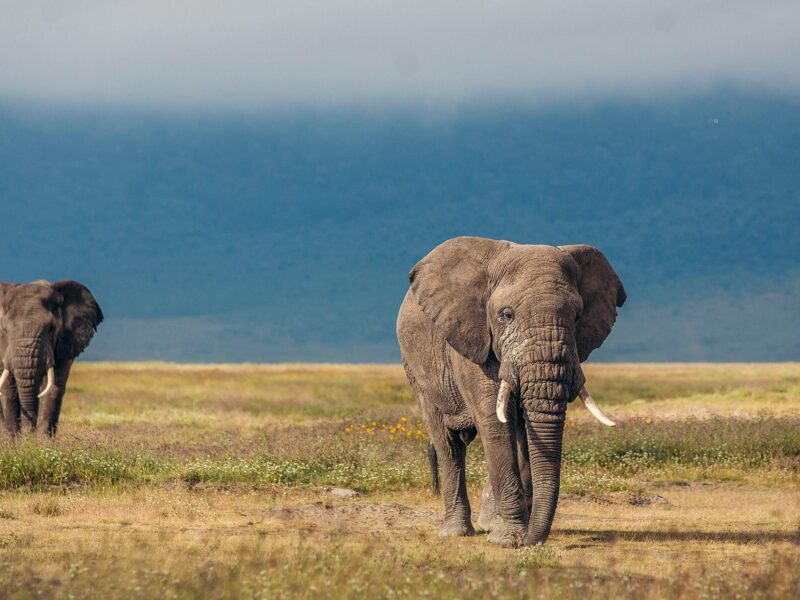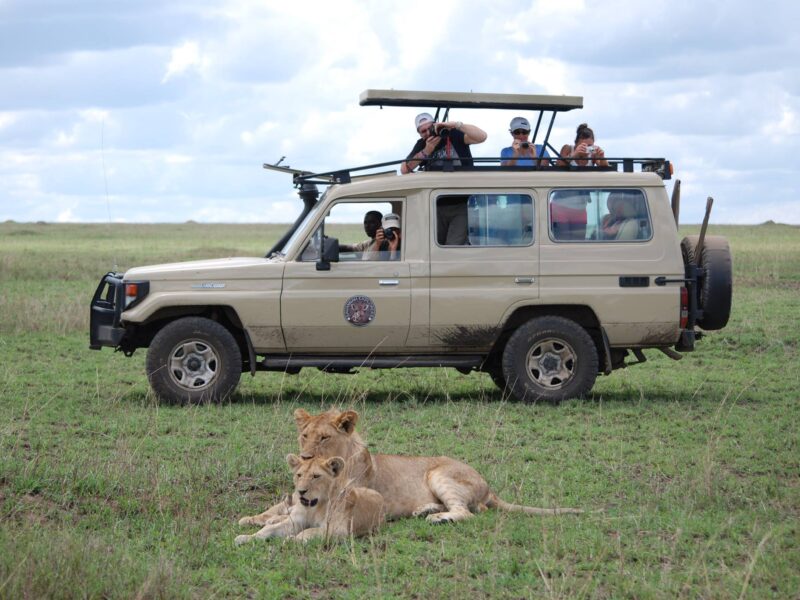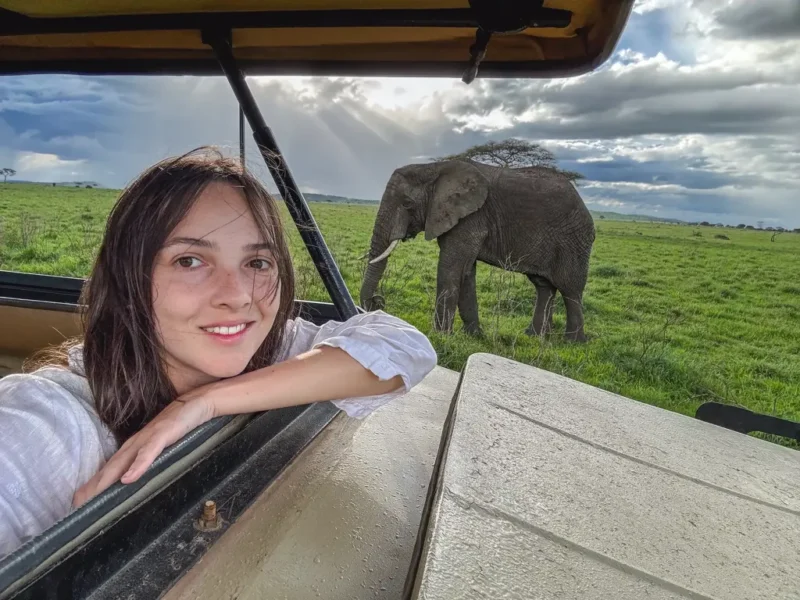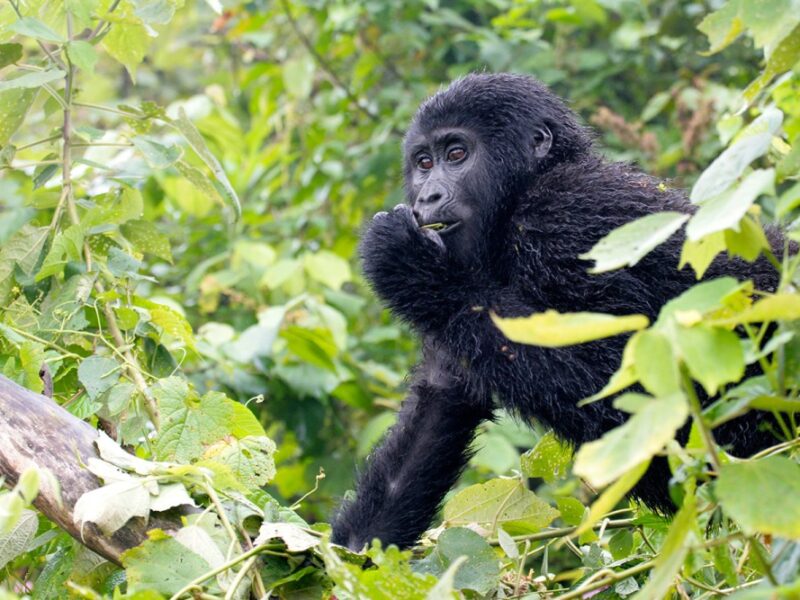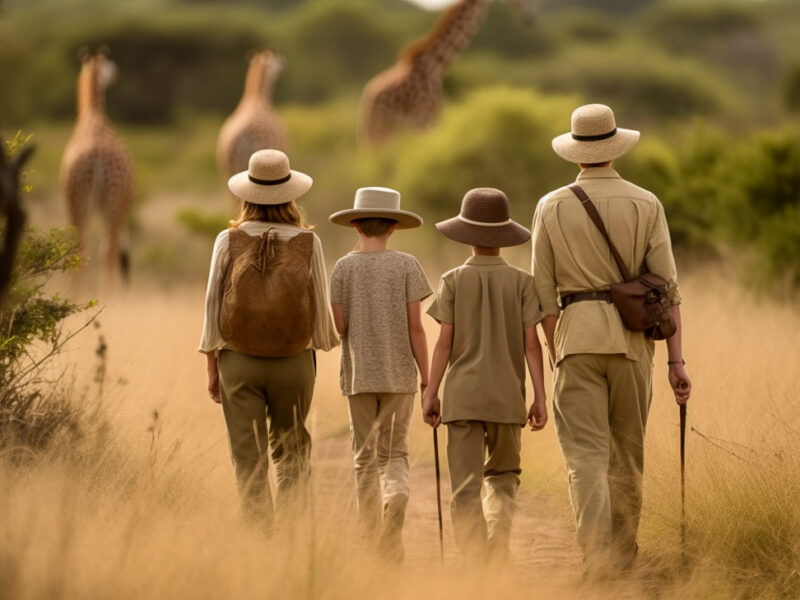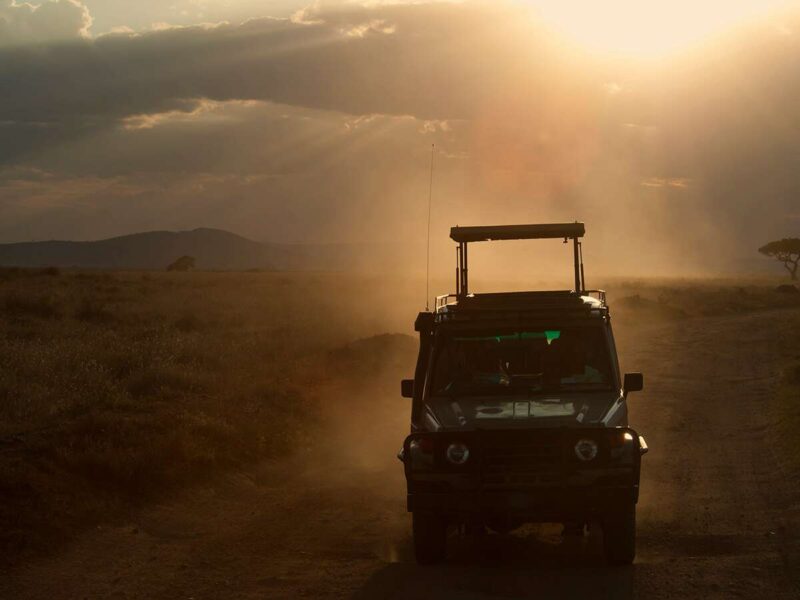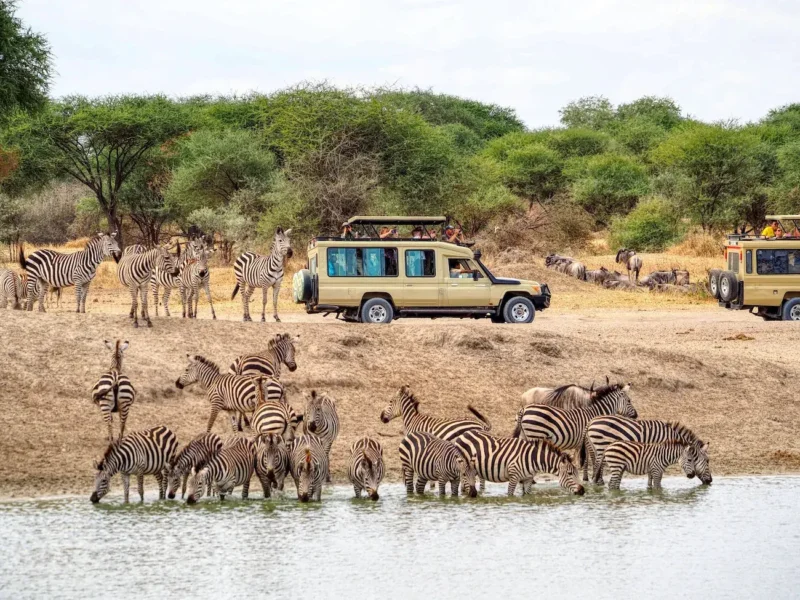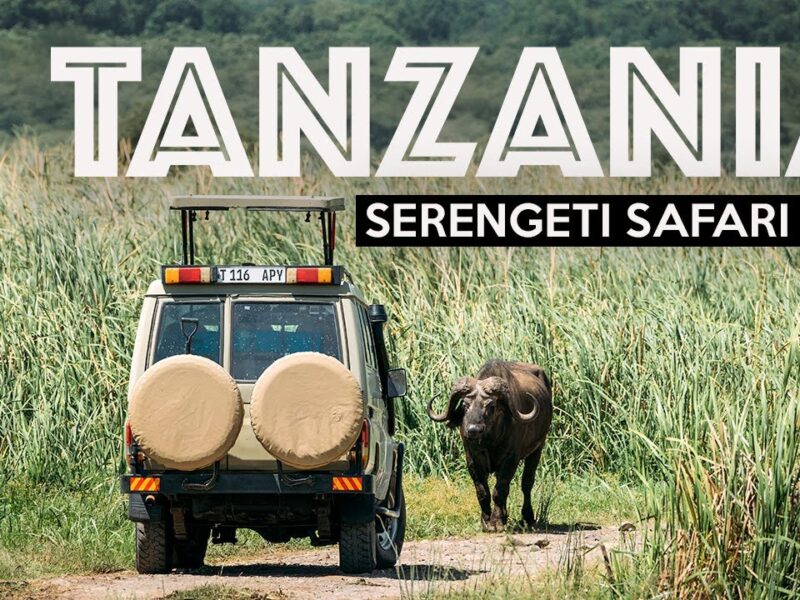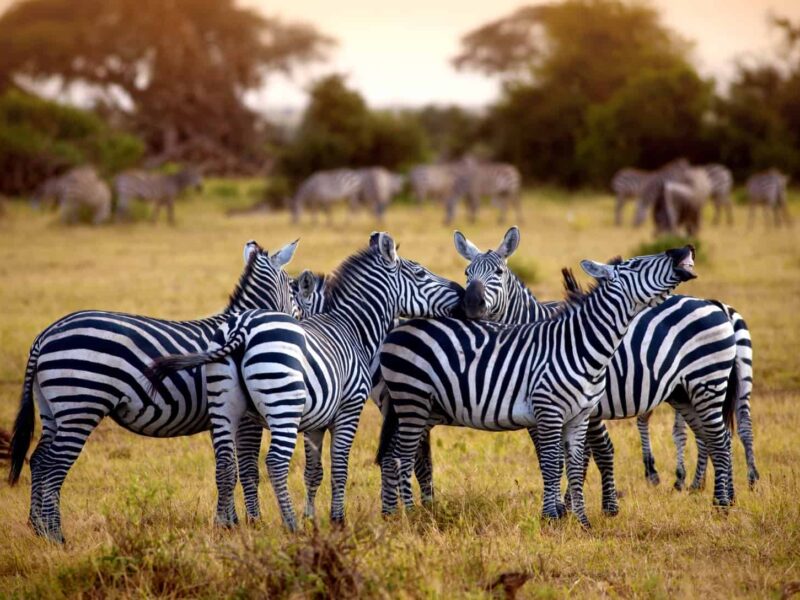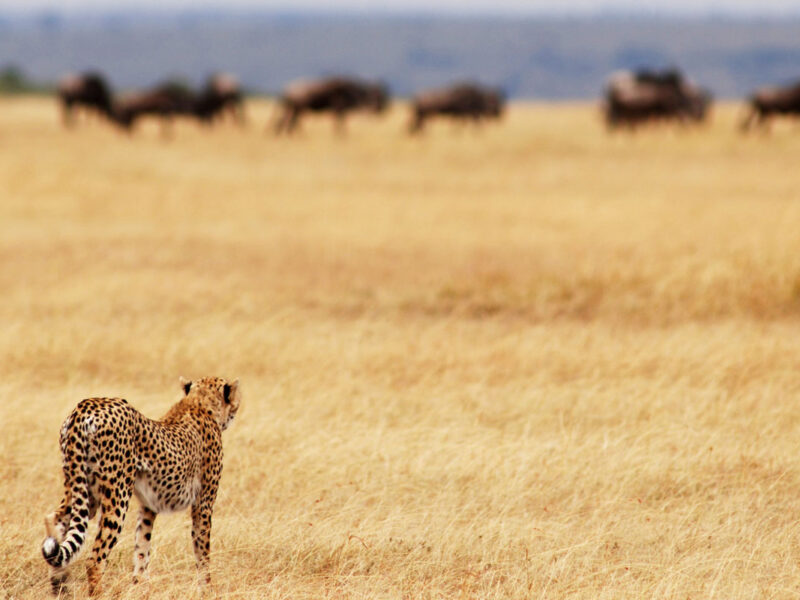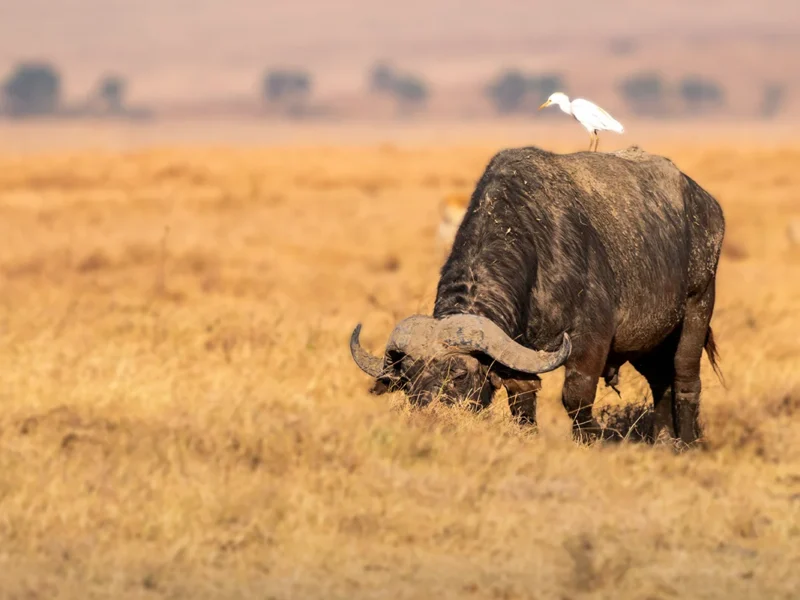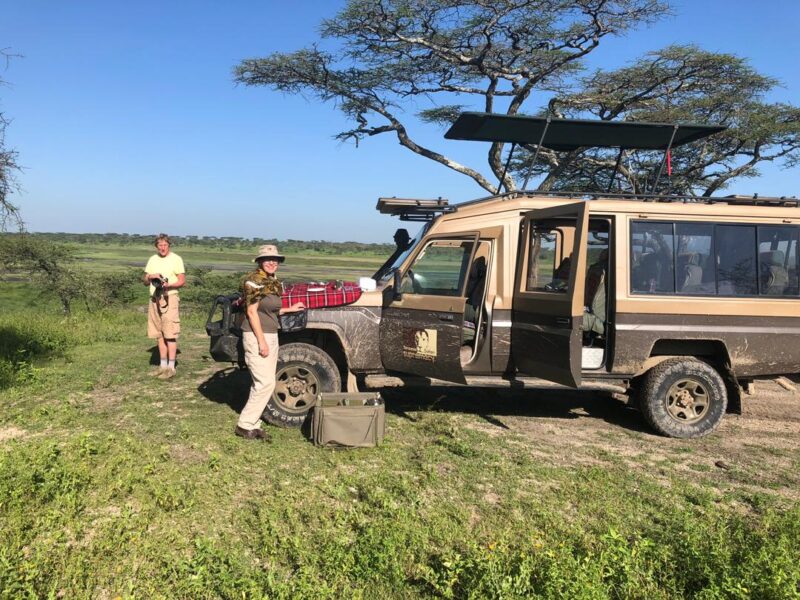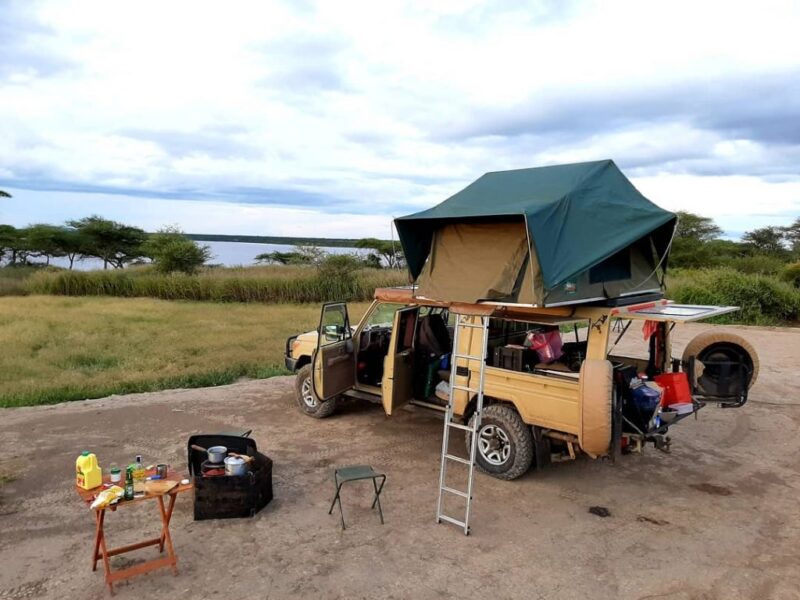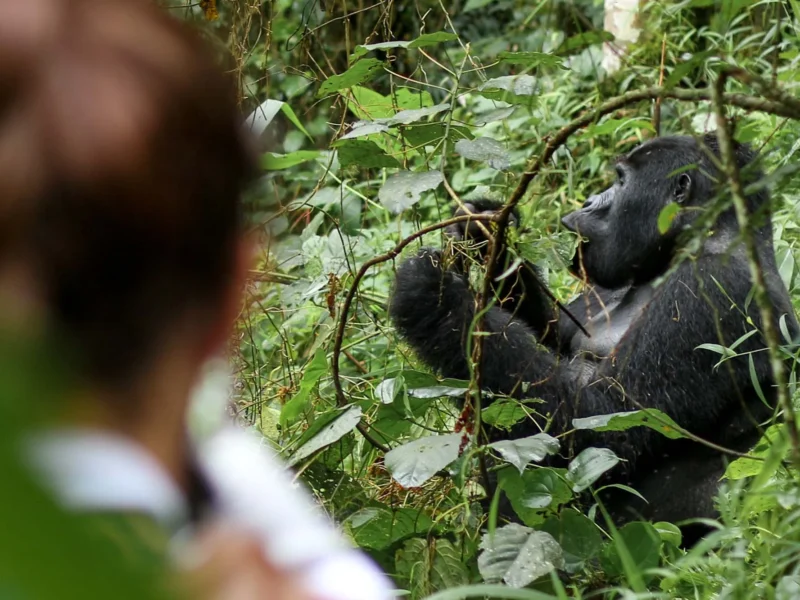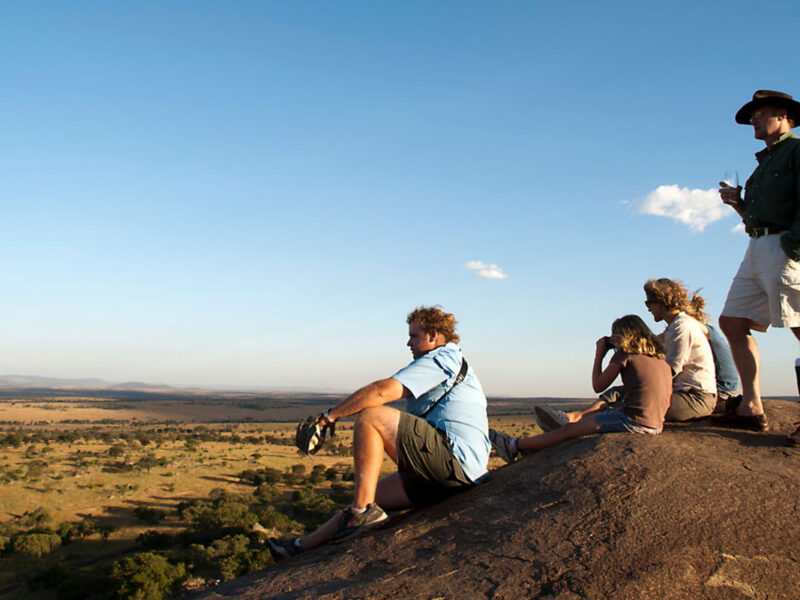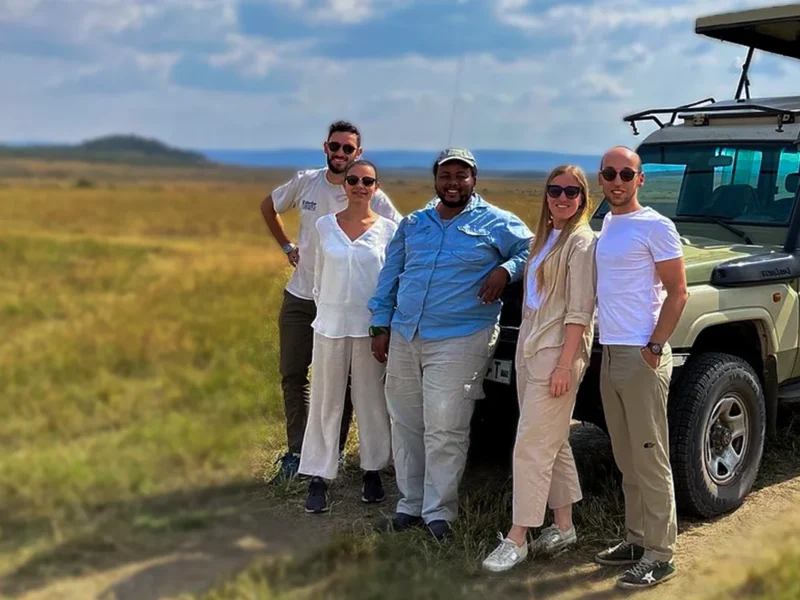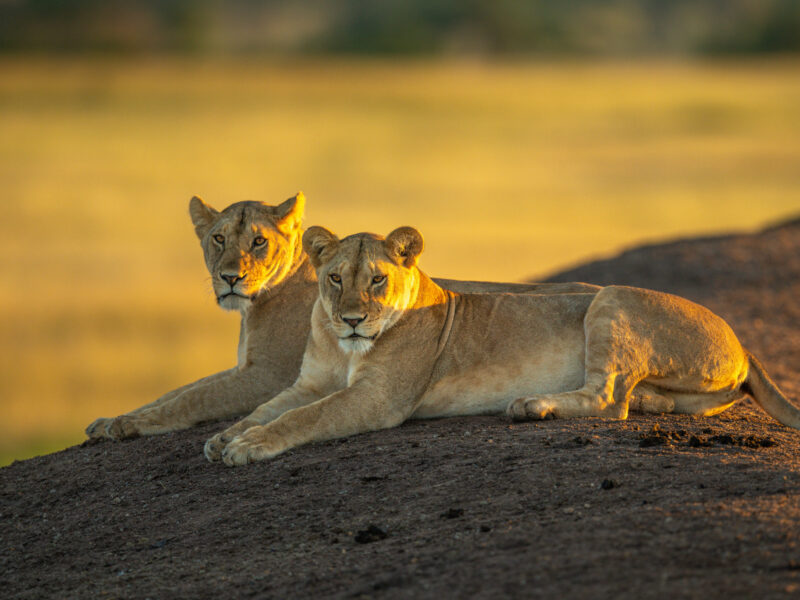Africa Great Wildlife Migration: A Spectacular Natural Phenomenon in Kenya and Tanzania
The Great Wildlife Migration, often hailed as one of the most impressive natural spectacles on Earth, is an annual event that takes place between Kenya and Tanzania. This awe-inspiring movement of over 1.5 million wildebeest, accompanied by hundreds of thousands of zebras and gazelles, follows a circular route across the vast savannas of the Serengeti in Tanzania and the Masai Mara in Kenya. The migration is driven by the search for fresh grazing and water, creating a dynamic and ever-changing landscape teeming with life and dramatic predator-prey interactions.
Iconic Tanzania Wildlife & Great Migration Safari Packages
-
10-Day Best Tanzania Safari
$ 5,297On this 10-day best Tanzania luxury honeymoon safari and beach vacation in Zanzibar, you will get a unique opportunity to visit the major parks of northern circuit.
-
11-Day Best of Tanzania Tour
$ 2,99511-Day Best of Tanzania Wildlife Tour Experience and Zanzibar Sandy Beach Safari. Experience the best of Northern Tanzania in six days! You’ll be visiting Tarangire National Park
-
12-Day Tanzania Wildlife Safari
$ 4,975Arusha City is the starting point for your 12-Day Tanzania Wildlife Safari Road trip which will cover many kilometres and vastly varying terrains. There is no shortage of wildlife.
-
5-Day Best Tanzania Big5 Safari
$ 1,635This 5-Day Best Tanzania Big5 Safari offers an exceptional opportunity to discover one of the most desirable locations for African safari tours: Northern Tanzania.
-
6 Days Tanzania Uganda Tour
$ 2,985Embark on an unforgettable adventure with the 6 Days Tanzania Uganda Tour, a journey that seamlessly blends the wild wonders of two East African gems: Tanzania and Uganda.
-
6-Day Tanzania Wildlife Safari
$ 4,790In this 6-Day Majestic Tanzania Wildlife Luxury Safari, you will have the opportunity to visit the most iconic parks of the northern safari circuit of Tanzania. Visit Tarangire National Park.
-
7-Day Tanzania Wildlife Tour
$ 2,986During this 7-Day Tanzania Wildlife Wonders Experience tour, you will start from Arusha, drive to and through Tarangire National Park, Lake Manyara National Park, the Ngorongoro Crater.
-
8-Day Tanzania Safari
$ 2,950Traford Safaris welcomes you to Tanzania, to enjoy a wonderful 8-Day Tanzania Northern Circuit Safari in our most reputable national parks.
-
9-Day Tanzania Adventure Safari
$ 4,1809-Day Tanzania Adventure Safari – Go Explore the Great Wildlife Migration Crossing Mara River. Tanzania is the best African safari country.
Iconic Kenya Wildlife & Great Migration Safari Packages
-
10-Day Kenya Adventure Safari
$ 2,889This 10-Day Kenya Adventure Safari takes you to Kenya’s major parks! It is value for money, and you have a high chance of spotting the Big Five and the ugly five.
-
4-Day Affordable Kenya Safari
$ 1,170Set on a private 4-Day Affordable Kenya Masai Mara Safari concession, with abundant iconic wildlife and panoramic Masai Mara views, Kichwa Tembo Tented Camp dazzles.
-
4-Day Kenya Wildlife Safari
$ 1,170A 4-Day Kenya Wildlife Adventure Safari of its kind that takes you to two of Kenya’s most popular wildlife-protected areas that is Masai Mara and Lake Naivasha.
-
5-Day Kenya Big5 Safari
$ 1,980This 5-Day Kenya Big5 Safari begins with game drives in Lake Nakuru popular for a variety of bird-life including flamingos and both black and white rhinos.
-
5-Day Kenya Wildlife Safari
$ 1,1705-Day Kenya Wildlife Safari to Amboseli, Lake Naivasha, and Masai Mara National Reserve – Mid-Range Kenya Safari. This 5-Day Kenya Wildlife Safari journey is through Amboseli.
-
6 Days Kenya Uganda Safari
$ 2,380Embark on an unforgettable journey with the 6 Days Kenya Uganda Safari Tour, starting from the vibrant city of Nairobi. Begin your adventure by immersing yourself.
-
6-Day Kenya Big Five Safari
$ 2,380This is a 6-Day Private Kenya Big Five Safari with accommodations located close to the parks which provides guests with a convenient base for exploring the park and its wildlife.
-
7-Day Kenya Wildlife Safari
$ 2,3807-Day Kenya Wildlife Safari to Amboseli, Naivasha, Nakuru & Masai Mara National Reserve Mid-Range Tour. Kenya is renowned for its vast wildlife and as an ideal destination.
-
8-Day Luxury Kenya Safari
$ 3,938This 8-Day Luxury Kenya Safari is a truly unrivalled cultural adventure that offers so much more than your average safari. Wildlife galore and breathtaking scenery.
Where to Witness the Great Wildlife Migration in Africa
Serengeti National Park, Tanzania
The Serengeti National Park in Tanzania is the epicenter of the Great Wildlife Migration and offers perhaps the most comprehensive view of this phenomenon. The migration begins in the southern Serengeti, where the wildebeest calving season takes place from January to March. This period is crucial for survival, as thousands of calves are born within a few weeks, attracting predators such as lions, cheetahs, and hyenas. As the dry season approaches in April and May, the herds move northward through the central and western Serengeti, crossing the Grumeti River, where they face the perilous challenge of crocodile-infested waters.
The herds continue their journey towards the northern Serengeti and the Mara River, which forms the border between Tanzania and Kenya. The Mara River crossing is one of the most dramatic events of the migration, where the sheer number of animals, combined with the presence of waiting crocodiles, makes for a breathtaking and often heart-wrenching spectacle.
Masai Mara National Reserve, Kenya
The Masai Mara National Reserve in Kenya is the northern extension of the Serengeti ecosystem and is world-renowned for its role in the Great Migration. After crossing the Mara River, the herds spread out across the Mara’s lush grasslands, where they remain from July to October. The Masai Mara offers excellent opportunities for witnessing large concentrations of wildlife, as the herds graze and rest before beginning their return journey to the Serengeti.
The migration in the Masai Mara is not only about the movement of the wildebeest and zebras; it also provides a unique chance to observe the interactions between these herbivores and the predators that follow them. The open plains of the Mara are home to large prides of lions, solitary leopards, and speedy cheetahs, making it one of the best locations for big cat sightings during the migration.
Best Time to Visit for the Great Wildlife Migration
The timing of the Great Migration is influenced by seasonal rains, which determine the availability of grazing land and water. While the migration is a year-round event, certain times of the year offer better opportunities to witness specific parts of the journey.
- January to March: This period is ideal for witnessing the calving season in the southern Serengeti, where the wildebeest give birth to thousands of calves. The lush plains provide ample food, making it a relatively peaceful time before the migration intensifies.
- April to June: During these months, the herds begin moving northward through the central and western Serengeti. The crossings of the Grumeti River in May and June are particularly dramatic, offering a mix of tension and excitement as the wildebeest navigate the crocodile-infested waters.
- July to October: This is the peak season for viewing the migration in the Masai Mara. The Mara River crossings in July and August are among the most sought-after experiences, as the herds face the treacherous waters in their quest to reach the greener pastures of the Mara. September and October are excellent for observing the herds in the Mara before they start their return journey to the Serengeti.
- November to December: As the short rains begin, the herds start moving southward from the Masai Mara back to the Serengeti. This is a time of transition, with the herds spreading out across the plains, preparing for the next cycle of the migration.
Conclusion: A Timeless Journey Across the African Plains
The Great Wildlife Migration in Kenya and Tanzania is a timeless journey that showcases the resilience and instinctual drive of the animal kingdom. Whether witnessed in the expansive Serengeti or the iconic Masai Mara, the migration offers an unparalleled wildlife experience, characterized by dramatic river crossings, intense predator-prey interactions, and the sheer scale of the animal movements. For nature enthusiasts and wildlife photographers, timing a visit to coincide with the migration’s key events ensures an unforgettable adventure in the heart of Africa’s wilderness.


